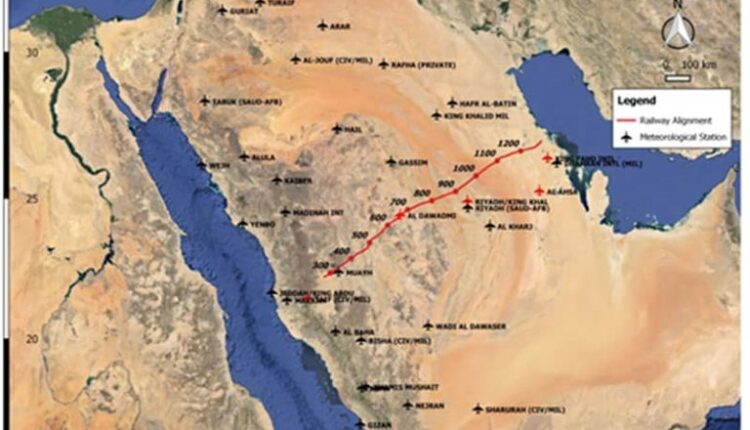Saudi Arabia’s Landbridge Railway: A Strategic Corridor Linking the Gulf to the Red Sea
Sea News – International Desk | Saudi Arabia is moving forward with the Landbridge Railway Project, a 1,500-kilometer rail network connecting the Arabian Gulf to the Red Sea. With an investment of $7 billion, the project goes far beyond serving as a passenger route between Riyadh and Jeddah — it is a cornerstone of the Kingdom’s broader economic, logistical, and regional trade development strategy. The route includes seven dry ports and is expected to create over 200,000 new jobs along its corridor. Once operational, the Landbridge will allow the transport of goods, oil, and petroleum products between coasts in just 18 hours, eliminating the need to pass through the Strait of Hormuz, which typically causes 5–10 days of delay and added cost.
The railway traverses arid plains, rocky deserts, sand dunes, and mountain ranges, presenting major engineering challenges such as shifting sands and high winds. To address these issues, Idrostudi, under the supervision of Italferr, conducted comprehensive studies and developed sand-mitigation strategies, including geotechnical analyses, wind and sand modeling, and design of resilient structures.
Technically, the Riyadh–Jeddah section will include 900 kilometers of new track, while the Riyadh–Dammam line will be upgraded. The design speed is 250 km/h for passenger trains and 140 km/h for freight, significantly reducing travel time and boosting transport efficiency.
Economically, the Landbridge will lower logistics costs and transit times, establish new logistics hubs, and position Saudi Arabia as a regional transit hub. The project aligns with the Saudi Vision 2030 plan to diversify the economy, modernize infrastructure, and create employment opportunities. From a geopolitical perspective, the railway will reduce dependence on the Strait of Hormuz, a move welcomed by neighboring Arab states. Its construction by Chinese firms and management by an American team further highlight its international significance.
However, the project also carries implications for Iran and neighboring economies. Experts estimate that full operation of the Landbridge could cause at least $15 billion in short-term economic losses for Iran, as a substantial portion of regional and global trade may shift to this new route. Given that 85% of Iran’s food imports and oil and gas exports rely on existing Gulf transit routes, the Saudi corridor poses a potential threat to Iran’s traditional maritime and overland pathways.
In sum, Saudi Arabia’s Landbridge Railway represents a transformational infrastructure, economic, and strategic project — one that positions the Kingdom as a key logistics hub in the Middle East. Through tackling environmental and engineering challenges, reducing reliance on high-risk chokepoints, and expanding integrated logistics systems, the Landbridge stands as a model for infrastructure and logistics development across the region.
Sources:
-
Logistics Manager
-
Saudi Landbridge Project Reports, Saudi Railway Company (SAR)
-
Idrostudi / Italferr studies on sand and wind mitigation

